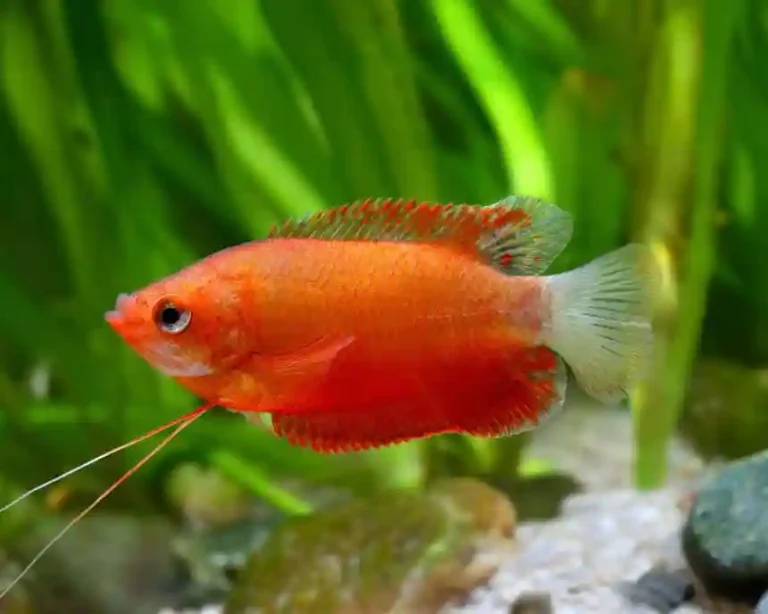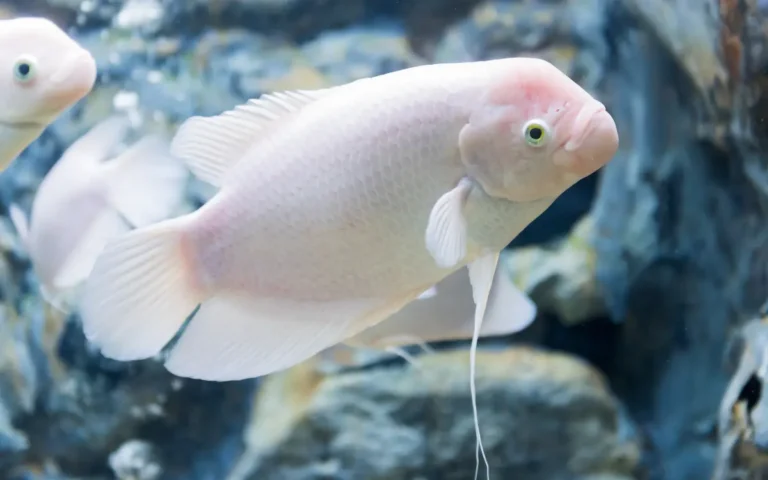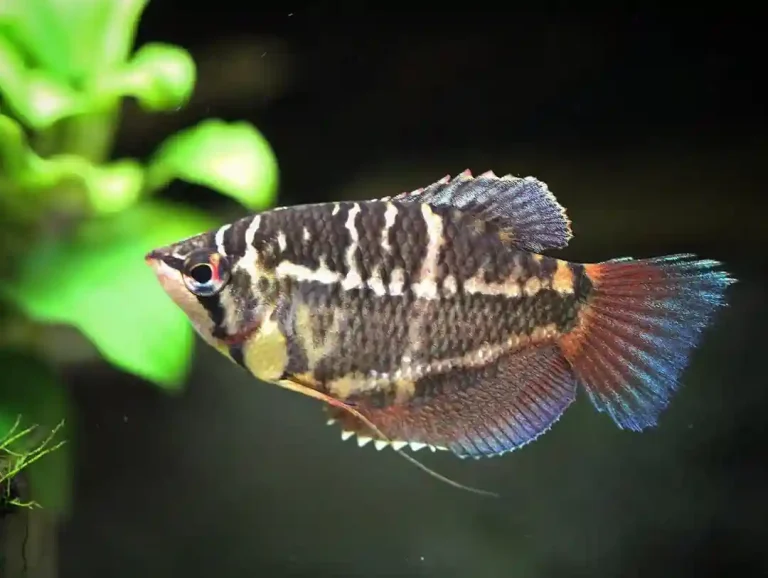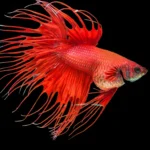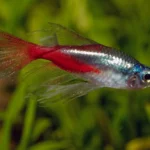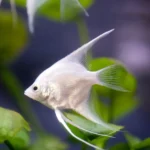Setting up your first aquarium? Or just looking for fish that low maintenance in your aquarium? You’re not alone. Whether you’re a beginner or simply want a stress-free tank, choosing low-maintenance fish can make fishkeeping enjoyable and easy.
In this guide, we’ve rounded up the 15 easiest fish to take care for aquariums perfect for small tanks, kids, bowls, or even filter-free setups (with care). These fish are hardy, peaceful, and simple to feed, making them ideal for anyone starting out.
Let’s explore the best beginner-friendly fish you can keep with confidence without needing expert skills or constant care.
What Makes a Fish Easy to Care For?
Not all fish are created equal when it comes to care needs. Some species are delicate and need perfect water conditions or complex diets. Others? They’re much easier — and that’s what this article is all about.
Here’s what usually makes a fish easy to take care of:
- Hardy Nature: They can handle small mistakes — like a missed feeding or a minor water change delay.
- Peaceful Temperament: No chasing or bullying tank mates.
- Simple Diet: Eats flakes, pellets, or common frozen foods without fuss.
- Small Size: Less waste, smaller tank needs, easier cleanup.
- Adaptability: Can adjust to a range of water temperatures and conditions.
If you’re starting out or don’t want to spend hours maintaining your tank, these traits are what you want.
1. Betta Fish

Care Level: Very Easy | Tank Size: 3–5 gallons minimum | Temperament: Mostly peaceful (solo)
Betta fish are often the first pick for beginners — and for good reason. They’re colorful, full of personality, and can thrive in smaller tanks without complicated equipment.
Since they breathe air from the surface, bettas don’t rely heavily on strong filtration or aeration. They prefer calm water, enjoy floating plants, and are happy living alone (which also means no compatibility issues to worry about).
Feed them once or twice a day with quality betta pellets or occasional treats like frozen bloodworms. Just don’t overfeed — their stomachs are tiny!
Best For: Small tanks, solo setups, and even bowl-like environments with careful maintenance.
Tip: Keep their water clean and warm (76–80°F) — and avoid placing them with fin-nipping tank mates.
2. Guppies

Care Level: Easy | Tank Size: 5+ gallons | Temperament: Peaceful and active
Guppies are small, colorful, and incredibly beginner-friendly. They adapt well to different water conditions, eat basic flake food, and stay peaceful in community tanks — which makes them a favorite for first-time fishkeepers.
They’re also livebearers, meaning they give birth to baby fish instead of laying eggs. So if you keep males and females together, don’t be surprised to see tiny fry swimming around soon!
Guppies love a planted tank, swim in all areas of the tank, and do well in groups of 3 or more. They’re active but not aggressive, so they mix well with other calm fish.
Best For: Community tanks, beginner aquariums, kids learning about fish care.
Tip: If you don’t want babies, keep only males — they’re more colorful anyway.
3. Platy Fish
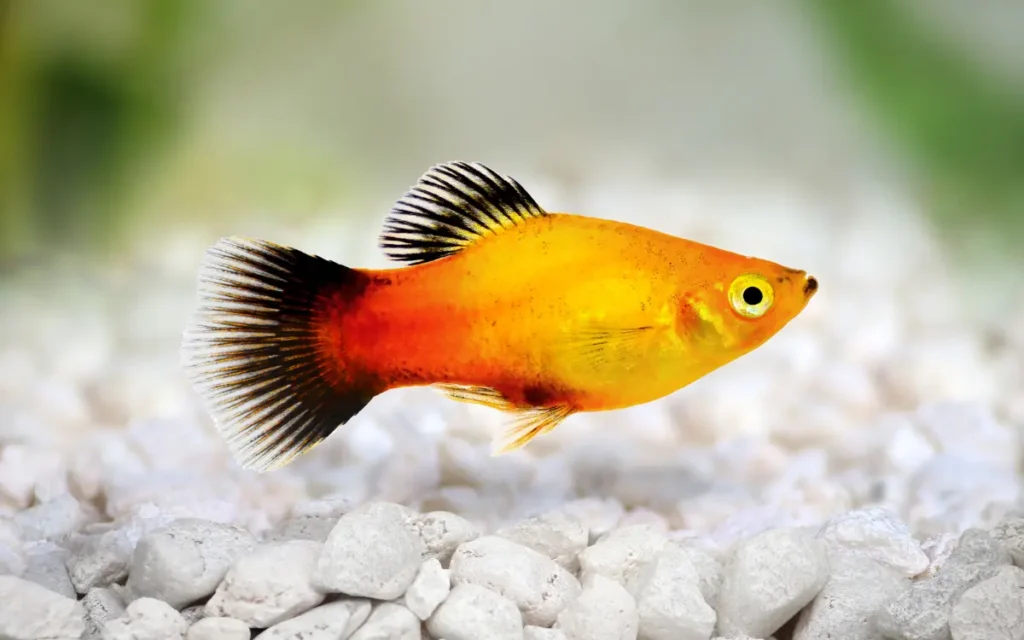
Care Level: Easy | Tank Size: 10+ gallons | Temperament: Peaceful and social
Platies are cheerful little fish that come in a wide range of colors and patterns — from bright red and yellow to spotted or tuxedo varieties. They’re known for being extremely hardy and adaptable, making them ideal for beginners.
Like guppies, platies are livebearers and can reproduce quickly if males and females are kept together. They enjoy being in small groups and get along well with other peaceful community fish.
Platies aren’t picky eaters. Flake food, pellets, frozen brine shrimp — they’ll eat it all. They also love a planted tank and benefit from some open swimming space.
Best For: Peaceful community setups, small to mid-sized aquariums.
Tip: Keep a balanced male-to-female ratio (1 male to 2 females) to reduce stress if breeding.
4. Mollies
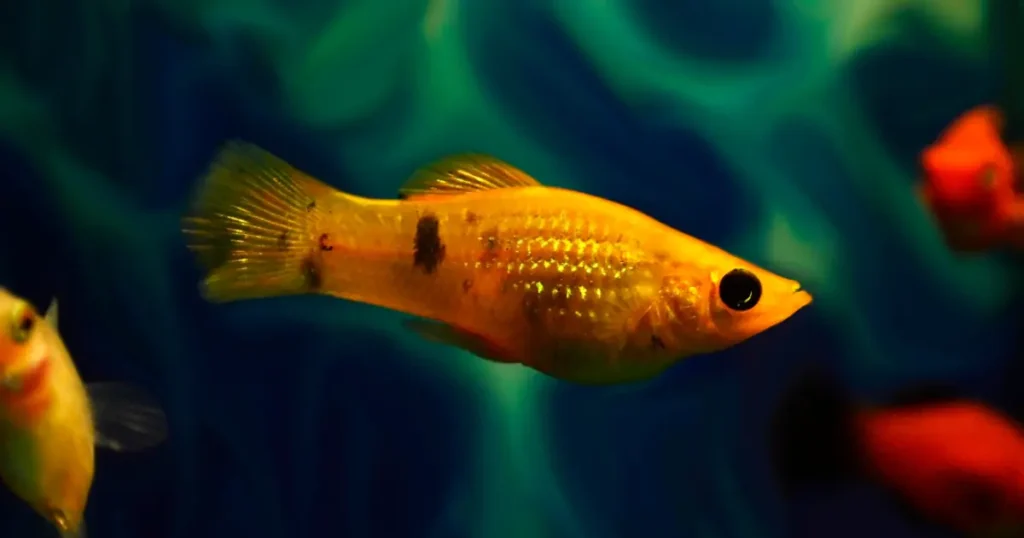
Care Level: Easy | Tank Size: 15+ gallons | Temperament: Peaceful but active
Mollies are another great low-maintenance option, especially if you like fish with variety. They come in short-fin, sailfin, and balloon shapes, and in colors like black, gold, dalmatian, and orange.
They’re adaptable to both freshwater and slightly brackish water, and can live in a wide temperature range. Mollies do best in larger tanks with room to swim and a bit of plant cover. They’re social and thrive in groups of 3 or more.
Like guppies and platies, they’re livebearers, so you might end up with baby fish unless you keep just one gender. They eat flakes, pellets, and enjoy some veggie matter like blanched spinach or algae wafers.
Best For: Beginners with a bit more space, planted tanks, peaceful community tanks.
Tip: Mollies prefer stable water quality — keep up with water changes and avoid overfeeding to prevent algae blooms.
5. Zebra Danios

Care Level: Very Easy | Tank Size: 10+ gallons | Temperament: Peaceful, fast-swimming
Zebra Danios are one of the toughest and most forgiving fish in the hobby. With their slim, striped bodies and zippy swimming style, they add life to any beginner tank.
These fish tolerate a wide range of water conditions and are rarely affected by common beginner mistakes. They’re best kept in groups of 5 or more to reduce stress and bring out natural behavior. Lone danios may nip or become anxious.
Zebra Danios are constantly on the move and prefer open swimming space, so they pair well with other active, peaceful fish. They’re not picky eaters either — flakes, pellets, and frozen foods all work well.
Best For: Coldwater or tropical setups, starter community tanks, low-maintenance tanks.
Tip: Because they’re fast, avoid pairing them with slow or long-finned fish like bettas.
6. White Cloud Mountain Minnows
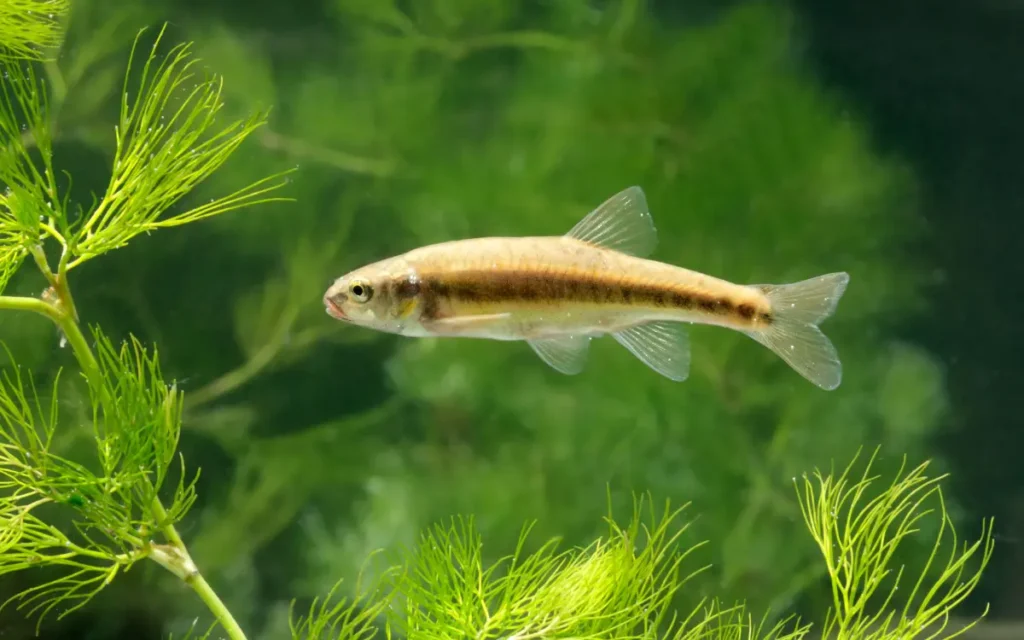
Care Level: Very Easy | Tank Size: 5+ gallons | Temperament: Peaceful and social
White Cloud Mountain Minnows are often overlooked, but they’re a hidden gem for beginners. These small, shimmering fish are hardy, colorful, and can tolerate cooler temperatures — even room temperature in many cases.
They’re best kept in groups of 5 or more and do well in planted tanks with calm water flow. Unlike many tropical fish, they don’t need a heater if your room stays above 65°F (18°C).
Their diet is simple — flakes, micro pellets, and frozen foods. They’re peaceful tank mates for other small species and are known to live longer than many beginner fish.
Best For: Unheated aquariums, nano tanks, beginner-friendly community setups. Tip: They’re great for kids’ tanks — calm, resilient, and active in groups.
7. Neon Tetras
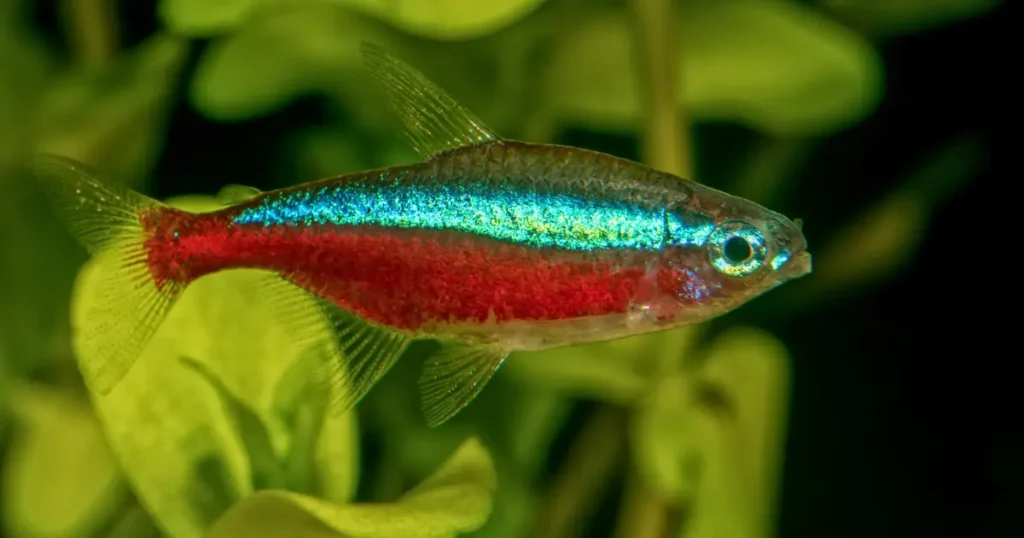
Care Level: Easy | Tank Size: 10+ gallons | Temperament: Peaceful and shy
Neon tetras are known for their glowing blue and red stripes, and their schooling behavior makes them a beautiful addition to any tank. They’re fairly easy to care for if the water stays stable and clean.
These tetras do best in groups of at least 6 and prefer gentle lighting and plant cover where they can retreat. They thrive in slightly acidic to neutral water and enjoy flakes, micro pellets, and baby brine shrimp.
While slightly more sensitive than danios or platies, they’re still great for beginners willing to do simple weekly maintenance.
Best For: Calm, planted community tanks with other small peaceful fish.
Tip: Avoid sudden temperature changes — neon tetras prefer consistency.
Read also: Types of Tetras: Colorful, Peaceful, and Easy to Keep
8. Ember Tetras
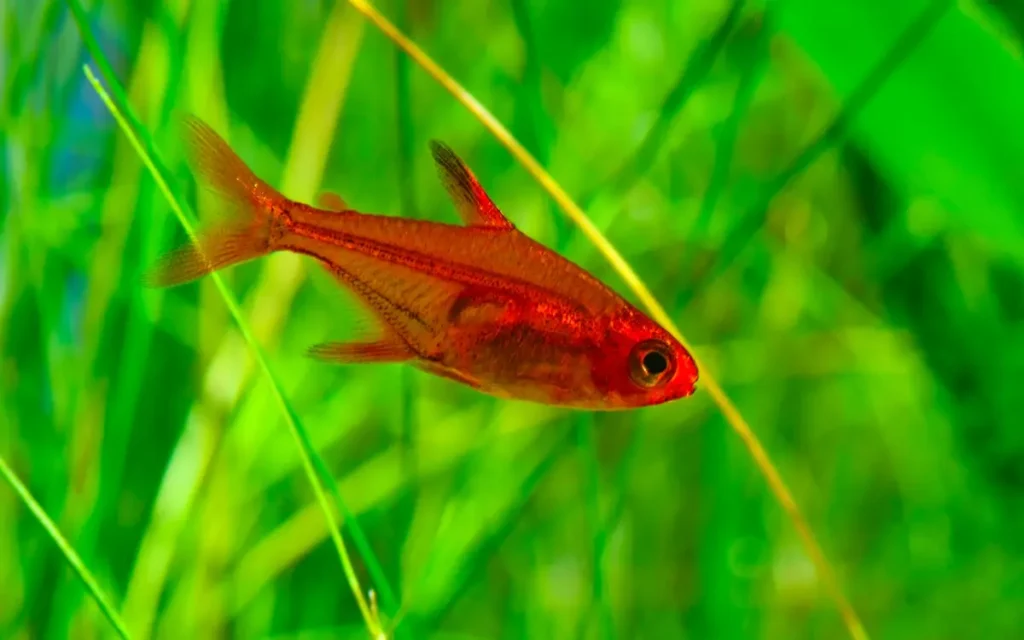
Care Level: Easy | Tank Size: 5–10 gallons | Temperament: Very peaceful
If you’re looking for tiny, glowing orange fish for a nano tank, ember tetras are a perfect choice. These little guys are calm, peaceful, and love to hang out in groups of 6 or more.
They do best in tanks with lots of plants and a darker background, which helps their colors stand out. Ember tetras are not demanding with food and will eat micro pellets, crushed flakes, and frozen daphnia.
Their small size makes them ideal for small aquariums, and their gentle nature makes them excellent community fish.
Best For: Nano tanks, planted setups, peaceful community aquariums.
Tip: Keep them in larger schools for better color, activity, and confidence.
9. Endler’s Livebearers
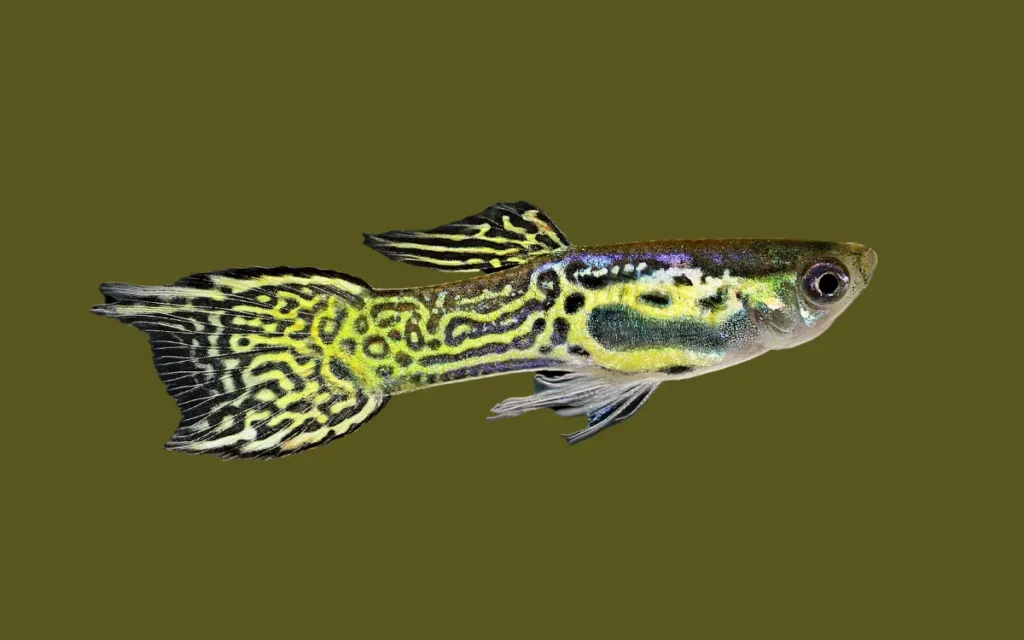
Care Level: Easy | Tank Size: 5+ gallons | Temperament: Peaceful and playful
Endlers look like miniature guppies with even more vibrant colors. They’re easy to care for, endlessly active, and thrive in small tanks — making them perfect for beginners.
These fish are incredibly adaptable and breed just like guppies (frequently!). If you keep males only, you’ll still enjoy the color and energy without managing baby fish.
Endlers are happy in planted tanks and are not picky eaters. They do great in peaceful communities or species-only tanks.
Best For: Nano aquariums, kids’ tanks, guppy lovers who want something smaller.
Tip: Keep a secure lid — Endlers can jump when startled.
10. Cherry Barbs

Care Level: Easy | Tank Size: 15+ gallons | Temperament: Peaceful and shy (males are brighter)
Cherry barbs are one of the calmest members of the barb family. Their reddish-pink color and calm nature make them great additions to beginner tanks.
They prefer being in groups of 5 or more but are more shy than active. Males get brighter red during breeding time, while females stay pale orange. They enjoy tanks with plants and hiding spaces, and they’re fine with other peaceful species.
Their feeding is simple — flakes, small pellets, and frozen treats all work well.
Best For: Slightly larger beginner tanks, planted setups, calm community tanks.
Tip: Mix more females than males to reduce competitive behavior.
11. Corydoras Catfish
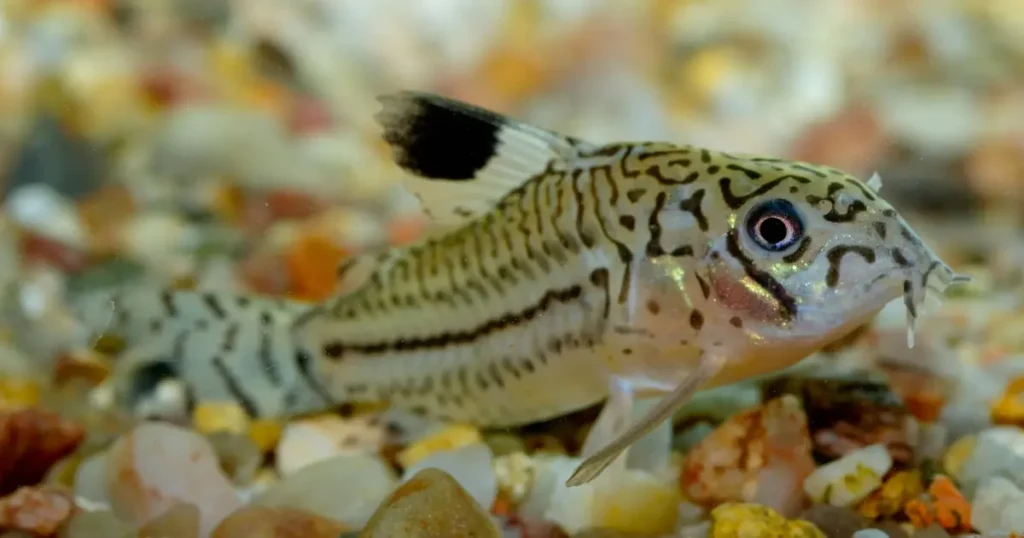
Care Level: Easy | Tank Size: 10+ gallons | Temperament: Peaceful bottom-dwellers
Cory catfish are adorable, armored-bottom dwellers that help keep your tank clean by scavenging leftovers. They’re social fish and prefer groups of 4–6, where they’ll school along the bottom and explore together.
Corys are very peaceful, don’t bother other fish, and thrive in tanks with smooth gravel or sand. They enjoy sinking pellets, algae wafers, and blanched veggies.
They’re very hardy and tolerant, but do appreciate stable, clean water and plenty of hiding spots.
Best For: Planted tanks, tanks with other mid-to-top swimmers, beginner-friendly communities.
Tip: Avoid sharp substrate — soft sand is best for their delicate barbels.
12. Kuhli Loaches
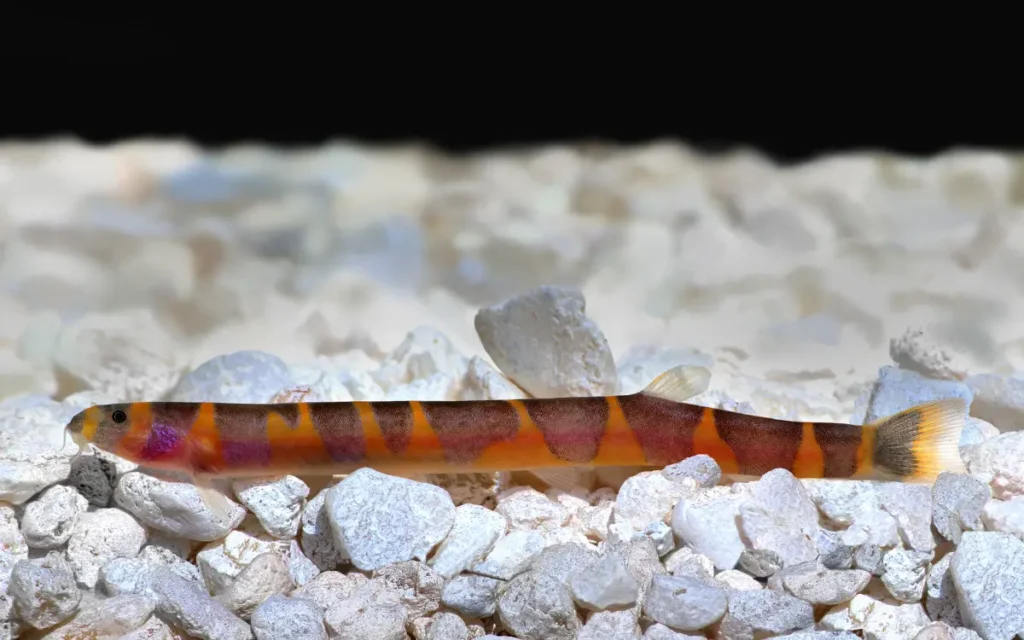
Care Level: Easy | Tank Size: 15+ gallons | Temperament: Shy and peaceful
Kuhli loaches look like little underwater eels, and they’re perfect for adding a unique look to a peaceful community tank. These nocturnal fish love to hide during the day and become more active at night.
They do best in soft substrate tanks with lots of hiding spots — caves, driftwood, and thick plants. You can keep them solo, but they’re happier and bolder in groups of 3–5.
They scavenge leftover food but also need sinking pellets and some protein-rich snacks.
Best For: Hidden life at the bottom of the tank, planted tanks, peaceful communities.
Tip: Make sure your tank lid fits well — kuhli loaches are known to wiggle their way out.
Read also: 15 Kuhli Loaches tankmates
13. Bristlenose Pleco
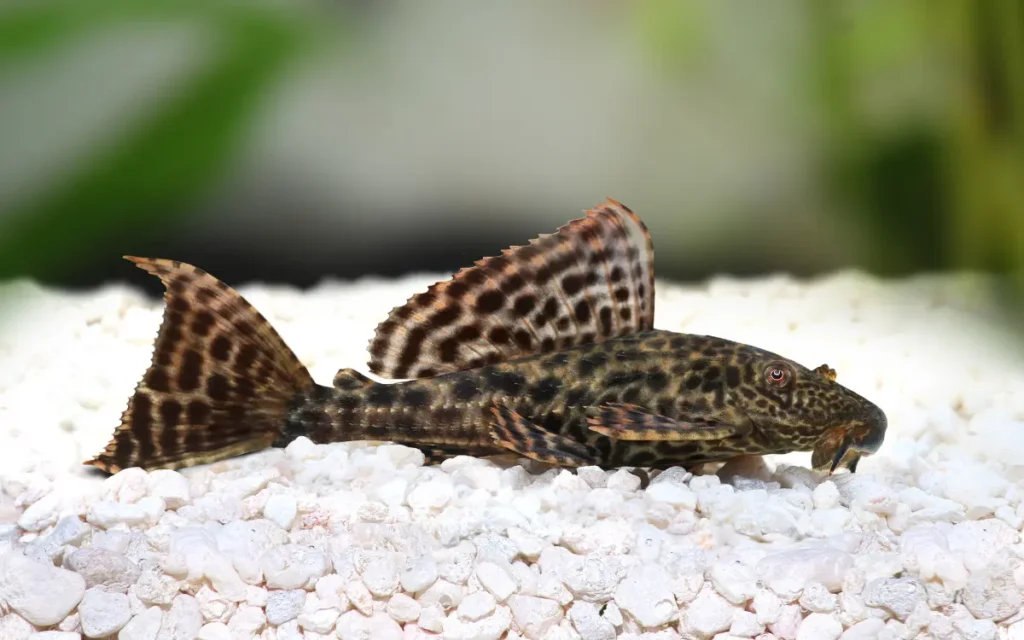
Care Level: Easy | Tank Size: 20+ gallons | Temperament: Calm and reclusive
Bristlenose plecos are excellent algae eaters that stay much smaller than common plecos — usually around 4–5 inches fully grown. They help keep the tank clean and are super low-maintenance once established.
They’re active at night and spend their time suctioned to glass, decor, or driftwood. They need some driftwood in the tank (for grazing), and they enjoy veggies like cucumber or zucchini.
These fish are very hardy and don’t bother others, but they do best in tanks with enough space and hiding spots.
Best For: Low-maintenance algae control, medium-to-large tanks, peaceful setups.
Tip: One per tank is usually enough — they don’t need company.
14. Harlequin Rasboras
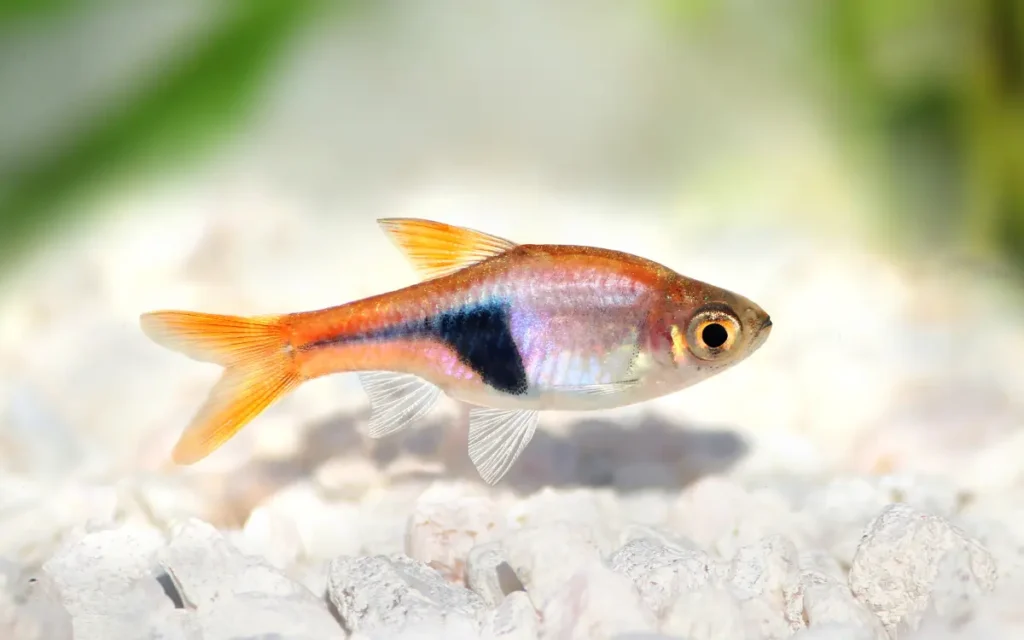
Care Level: Easy | Tank Size: 10+ gallons | Temperament: Schooling and peaceful
Harlequin rasboras have a distinctive black wedge shape on their body and a shimmering copper-pink hue. They’re peaceful, social, and one of the most reliable schooling fish for beginners.
They do best in groups of 6 or more and enjoy well-planted tanks with open swimming space. They’re undemanding eaters and thrive on flakes, pellets, and frozen foods.
Their calm behavior and ease of care make them great companions for other peaceful fish like tetras, guppies, and corydoras.
Best For: Beautiful schooling displays, planted tanks, mixed beginner communities.
Tip: A dark background and soft lighting help their colors stand out.
15. Dwarf Gourami
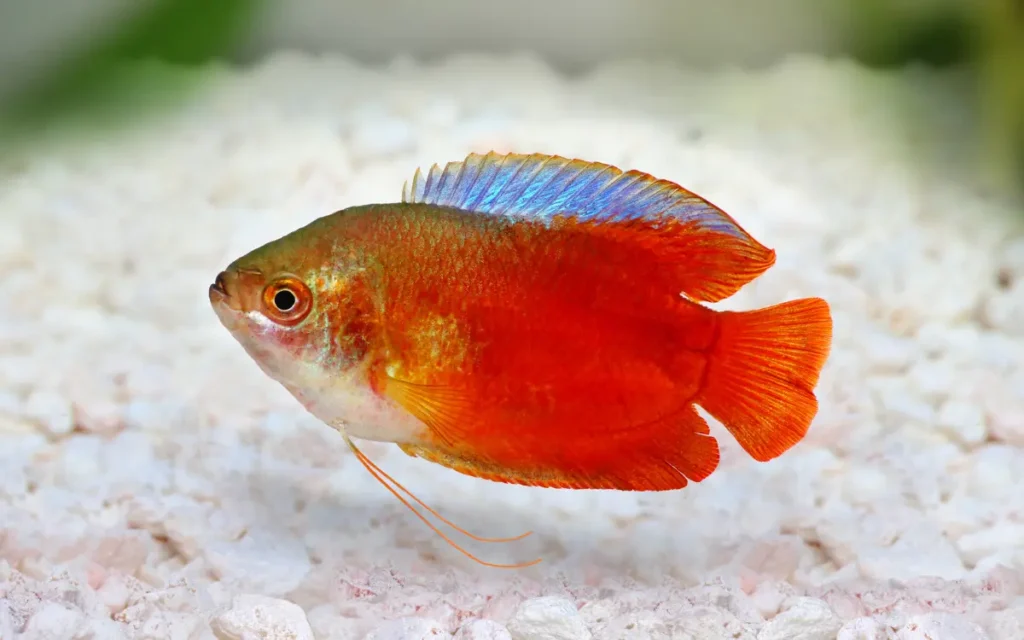
Care Level: Easy | Tank Size: 10+ gallons | Temperament: Peaceful, occasionally territorial males
Dwarf gouramis are vibrant, slow-swimming fish that can become the centerpiece of a beginner tank. Males are more colorful — often red, blue, or rainbow-toned — while females are subtler in appearance.
They prefer calm tanks with floating plants and don’t need a lot of current. While mostly peaceful, some males can be territorial, so it’s best to keep just one male or provide space if you want a pair.
They eat flakes, pellets, and frozen food, and they enjoy gentle interactions with tank mates.
Best For: Planted aquariums, centerpiece fish in a small community, beginner tanks. Tip: Keep the tank covered — they’re labyrinth fish and can jump.
Read also: 11 Types of Gourami Fish
Common Mistakes to Avoid with Easy-Care Fish
Even with beginner-friendly fish, there are a few common slip-ups that can cause stress or sickness in your aquarium:
- Overfeeding: It’s tempting to feed often, but too much food pollutes the water. Feed small amounts once or twice daily.
- Skipping Water Changes: Clean water is essential. Aim for a 25% water change once a week — even for small tanks.
- Overstocking: Adding too many fish, especially in small tanks, leads to poor water quality and stressed fish.
- Mixing Incompatible Species: Not all “peaceful” fish get along. Always research tank mates before adding new fish.
- Ignoring Water Parameters: While many beginner fish are hardy, extreme pH or temperature swings can still harm them.
With just a little consistency, you can avoid these problems and keep your fish healthy for years.
How to Make Fishkeeping Easier for Beginners
Want to keep your tank looking great without stress? Here are a few simple tips that make caring for fish even easier:
- Start with a 10-gallon tank or larger — it’s more forgiving than a small bowl.
- Use a sponge filter — quiet, easy to clean, and perfect for beginners.
- Add live plants — they help absorb waste and keep the water stable.
- Stick to hardy species like guppies, platies, and corydoras.
- Set a routine — feed your fish and check on the tank at the same time each day.
- Invest in a water test kit — it helps you catch issues early.
With the right setup and species, fishkeeping becomes a relaxing hobby — not a chore.
FAQ:
What is the easiest fish to take care for in an aquarium?
Betta fish, guppies, and platies are among the easiest. They’re hardy, eat standard food, and don’t require complex setups.
Can I keep fish without a filter or heater?
Yes, but it’s not ideal. Bettas and white cloud minnows can survive without filters or heaters in some cases, but frequent maintenance is required. Use live plants and don’t overstock.
What fish are best for a small tank?
Endlers, ember tetras, and bettas are great for tanks under 10 gallons. Just be mindful of space and water quality.
Are there fish suitable for bowls?
A filtered, heated tank is always better than a bowl. However, bettas and snails can manage in bowls temporarily with frequent care.
What fish are best for kids?
Guppies, platies, and white cloud minnows are easy, colorful, and low-maintenance — great for teaching kids responsibility.
Final Thoughts
Keeping fish doesn’t have to be complicated. With the right setup and some beginner-friendly choices, anyone can enjoy a peaceful, low-maintenance aquarium.
From solo bettas to social guppies, these easiest fish to take care for aquariums offer color, movement, and personality — all without the stress.
Want to learn more? Explore our Fish care guides on for step-by-step help with tank setup, feeding, and compatibility.

